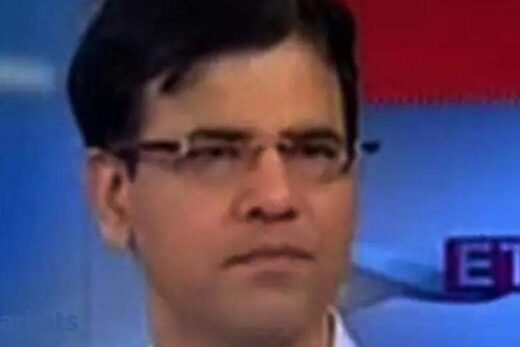We have argued in the past why Indian markets will be dominated by master franchises and the more I think about it, the more it is getting evident with the way the economy is moving. How will some of the master franchises evolve in the big economic recovery that we are staring at, which is currently fuelled by commodity prices and low liquidity?
The whole theme of the Indian market over the last decade has been this whole
Diamonds in the Dust story and that’s what we have written about in the book. Just to put some numbers around it, over the last 10 years, the Indian stock market has created $1 trillion of wealth. That is a big deal but 80% of that one trillion has come from 16 stocks. Another way to think about it is that today we have reached a situation in India where 10 master franchises or 10 diamonds account for 90-95% of the nation’s profits. The stock market creates a lot of wealth in India and that is the good news, but for the people out there who are thinking that they will have a punt here and have a punt there and make money in the market, the idea should be to focus on the a dozen-and-a-half franchises in the country which make huge amounts of money and which create a lot of wealth.
The stock market has 6,000 stocks but 15 to 16 companies will pretty much make all the money in the market. In this recovery also, we are seeing that in banking, sector leaders are growing their loan books at 15-16% while according to the RBI, the overall sector loan book is growing at 5%. In IT services, giants like TCS are able to keep attrition down to single digits whereas everybody else is struggling to keep attrition down even to 15%. So we are seeing this story play out in India where in every sector, one or two franchises are taking away 90% of the profits, 90% of the wealth and it is imperative that our clients lock into that dynamic.
So if 16 companies have created a lion’s share of wealth and a large amount of profit pool is now concentrated with 15-20 companies, are you saying that these companies will continue to create investor wealth?
That is right. Obviously, there will be some churn. The 15-20 companies delivered pretty much all the wealth in the market in the last 10 years and most of them will sparkle in the next 10 years. My reckoning is that around one-third of those 15 to 20 names will have a rough decade between 2020 and 2030 and there will be four-five new names. But the core construct of the Indian market will be a clustering of value creation around super-powered franchises, strong competitive advantages, high class corporate governance and superior use of technology.
So the core construct of the market will remain those 15-20 names and despite some limited churn, those names will drive the core of wealth creation in the market. Our book tries to help people identify those. For example, TCS stands head and shoulders above any other IT services company. Its core competitive advantage is the way it recruits, trains and retains around two lakh people every year.
It is the largest training, retaining programme anywhere in the world that allows them to keep attrition low and grow rapidly while keeping wage inflation under control. They have 25% free cash flow compounding over the last 10-15 years. It is a monster franchise, a world leader that all of us can benefit from by investing in.
Let us start throwing in some stocks which may apply in your filter criteria, but are not part of the portfolio. One of them is ITC. Some would argue that it is a super franchise and it is generating cash flows and the FMCG business is not losing money and yet the stock is cheap. Why is that and why don’t you own it?
There are sort of three parts to creating wealth in our country, I have said this before but I will say this quickly again today and it is in the book as well – step 1, accounting and governance has to be top class. ITC ticks the box there. Step 2, you need to have deep competitive advantages, unquestionably ITC ticks the box. Its cigarette franchise is without equal in the country. But step 3, you need to take the surplus that the business generates and re-invest it so that the business grows at 20-25% — is where they have had a bit of a challenge. The cigarette franchise generates lots of cash — close to Rs 10,000 crore of cash comes out of the cigarette franchise that ITC has in its portfolio. The reinvestment of that money to generate EPS compounding of around 20% has been a bit of a challenge for the company over the last decade or so and which is why it is not in Marcellus’ portfolio.
My reckoning is that the leadership in ITC are aware of the problem, they are aware of the scale of the issue and the day the company starts redeploying its Rs 35,000 crore of cash on the balance sheet to generate a 20% EPS compounding machine, will obviously be very happy if you look at that stock.
If one looks at the master franchise or the champion franchise stocks which you own — be it , Asian Paints or a combination of HDFC Life or Dr Lal Path, if one is investing or if one stays invested in these stocks from September 2021 to September 2025 or 2026, can they give a double digit return or at these levels should we not expect this kind of return?
In our client discussions, we keep telling people to not look at the share price. The share price will tell you nothing. The PE multiple gives you zero information on any company. The things to look at when you decide to invest — whether it is an Asian Paints, Pidilite or any other company — is to look at the gap between the return on capital and cost of capital. Typically for a champion franchise, the diamond franchise, there will be a gap of around 30%. Typically, you will find that the majority of that money gets reinvested back into the business. So if you reinvest say two-thirds of 30%, you are reinvesting back in the business 20% extra capital every year. It is very difficult then for the business not to grow at 20% odd.
If your business grows at 20% odd year after year after year, it does not matter whether the stock is trading at 60 PE or 30 PE. If the business grows at 20% year after year and if the company doubles every three and a half years, they will make double digit returns consistently for a very long time. And that is a very simple philosophy. We have tried to articulate it as best we can and we have tried to tell people not to look at PE multiples. They will tell us nothing about whether you make money from a stock or not. If you want to look at the numbers, look at the return in capital, look at free cash flow and the reinvestment of the same. That will give a pretty good idea whether there will be double digit returns or not.
You are saying not to look at share prices and try not to time the compounders. Can you tell us a bit more about that?
Linked to this theme about not looking at PE multiples, is what we have shown in chapter 6 of the book Diamond in the Rust. In fact, I was stunned by this. Suppose we had perfect foresight and bought a champion compounder like Asian Paints at the year’s low, every year for the last 10 years. Had we done so, we would have compounded the return around 27-28%, it is a great outcome and we are perfect timers. But suppose we are not that clever and we mechanically buy Asian Paints every year on a random base, say 1st January every year. If we did that every year for 10 years in a row, we will make around 26%, still a very good outcome. And then most stunningly we found that suppose we buy Asian Paints at the years’ high 10 years in a row, we will still compound at 19%!
Therefore, the point we are making is that if one locks into a champion franchise where the underlying business compounds at 20-25%, it does not matter whether one buys it at the years’ high or the year’s low. One will compound broadly at that 25%, as we say in the book. There are 15 to 20 such companies in the country and one should be locking into these master franchises. They will be the core, the key to wealth creation in India over the next decade.



